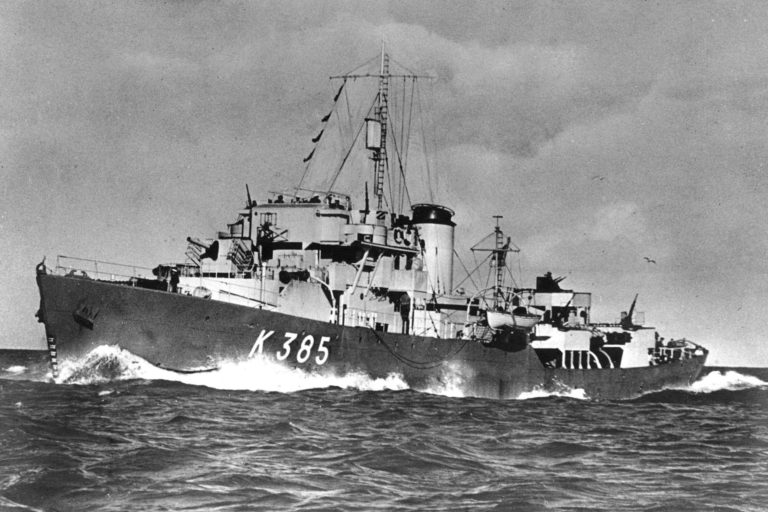Introduction
The New Zealand (NZ) Defence Force was not a big user of Mini Mokes. Navy Mokes were used on all four RNZN Leander class Frigates (70’s through to early 80’s) for shore transport, administration duties and as the Captains in port runabout. On some occasions they were also used as a Shore Patrol Wagon. Navy Mokes were either white or navy blue.
The First of the Line
The first Navy Moke came from the UK on the frigate HMNZS Blackpool which was a stop-gap measure until HMNZS Canterbury (second Leander frigate) was delivered. She served with the RNZN between 1966 -1971 and then was returned to the Royal Navy.
Rather than send her original English Moke back with the Blackpool it was transferred to HMNZS Lachlan.
HMNZS Lachlan was a River class frigate of 2200 tonnes fully loaded. Her Moke if carried, would have been stowed on the flight deck behind the Chart House. The Moke was hoisted onboard by shore cranes or driven off/on by ramps if the tide was suitable.
On the later Leander-class frigates the Moke was sometimes stowed in the hanger when the ship proceeded on deployment. This depended on: if there was room, all petrol had been removed from the fuel tank and the Flight Commander (Pilot) was in a good mood.
Other wise it would be stowed aft of the Flight Deck, (Quarter Deck) and lashed down, sometimes with a PVC cover. The second stowage option on the other two frigates, Otago and Taranaki was in the ships waist.
HMNZS Waikato
HMNZS Waikato’s Moke is the only NZ Navy Moke remaining and after refurbishment it is on permanent display in the Navy Museum at Torpedo Bay.
Mokes were a great little transport vehicle and very handy when picking up the mail and running the odd trip to get stores or to Headquarters at the Navy Base. They were also just about sailor proof and it took quite a bit of effort for the average sailor to break them.
This Moke appears to be an Australian variant which was presumably purchased when the Waikato entered service in the NZ Navy in the early seventies. There is a view that this Moke did not belong to Waikato but to HMNZS Canterbury. The reason for this is that Waikato’s pennant number was F55 and this appeared as the number plate on its Moke.
Apparently, if for some reason the specific ship’s Moke was unavailable, that Moke’s bonnet (displayed ships name and crest) would be swapped to a Moke that was available. The Canterbury’s Moke was once driven down a section of the Royal Navy County-class destroyer, HMS Fife’s main passage way as a joke during its visit to New Zealand in 1974.
The RNZN has a tradition that when the Captain of a ship (the Commanding Officer) changes, he/she is rowed ashore as a sign of respect, the moke was on occasions used for this purpose.
Mini Mokes[1]
The Mini Moke is a vehicle based on the Mini (with which the Moke shares many parts) and designed for the British Motor Corporation (BMC) by Sir Alec Issigonis.
The initial design was a prototype for a light military vehicle, but its small wheels and low ground clearance made it impractical as an off-road vehicle.
Only the Royal Navy showed any interest in it as a vehicle for use on the decks of aircraft carriers. It was subsequently offered in a civilian version as a low-cost, easily maintained utility vehicle.
The Moke finally achieved success as a beach buggy. The original Moke used identical engine, transmission and suspension parts to the basic Mini. Mokes were produced in the UK between 1964 and 1968.
Production was then moved overseas – to Australia between 1966 and 1981, and then to Portugal between 1980 and 1993 when production of the Moke ended.
British-made Mokes were fitted with a low-end 850cc I4 engine, detuned to use low-octane fuel. They used the same suspension, gearbox and 10-inch wheels as the standard Mini.
In the initial offering, passenger seats, grab handles, heater, windscreen washer and a removable canvas top were all optional equipment delivered separately from the vehicle.
Owners had to bolt these optional extras onto the vehicle themselves. The ‘Mk I’ Mokes had a single windscreen wiper and a floor-mounted headlight dip switch, and the only colour available was “Spruce Green”.
In 1967, the ‘Mk II’ Moke added a passenger-side wiper. Horn and headlight controls were moved onto the indicator stalk. These later British Mokes were also available in white.
The Moke was built in Australia from 1966 to 1981 where it was originally marketed as the Morris Mini Moke and from 1973 as the Leyland Moke.
Initially Australian Mokes had the same 10-inch wheels as British Mokes, however, these were soon replaced by 13-inch wheels with longer rear trailing arms, which made them more practical for gentle off-road or beach use than the British version.
The solid metal seats of the British Mokes were replaced with tubular-framed ‘deck-chair’ seats. This variant started with a 998 cc engine which was switched in mid-production to 1098cc.
In 1976, with the advent of new anti-pollution requirements, the locally made motor was replaced by an imported version of the 998cc motor with an air pump and exhaust gas recirculation, which had been developed to meet UK anti-pollution requirements.
Later Australian versions included a ‘Moke, special export’ (commonly called a “Californian”) which had a larger engine and was readily recognisable by its patterned vinyl roof and seats. From 1975, a pickup version of the Moke was also produced.
In 1980 manufacturing was transferred to Portugal, which made 8,500 of the ‘Californian’ Mokes before the Moke name was sold to Cagiva, an Italian manufacturer. Moke production continued in Portugal until 1993.
Use of Mini Mokes in the RNZN[2]
Unfortunately there is little documented information about the use of Mini Mokes in the RNZN. Most of the following information has come via word of mouth from past RNZN service personnel or has been gleaned from photographs (as noted in text).
It is believed that the RNZN had five Mini Mokes, which were assigned to HMNZS Waikato, Otago, Canterbury, Taranaki and Blackpool.
When Blackpool was paid off and returned to the RN in 1971, the Mini Moke was transferred to the survey vessel HMNZS Lachlan in 1972. It is also alleged that this Mini Moke was transferred in turn to the survey vessel HMNZS Monowai after Lachlan was decommissioned in 1974.
Each Mini Moke was funded by donations from the region that the ship was named after (although it is unclear who funded the Blackpool/Lachlan Moke).
It is believed that the RNZN Mini Mokes were all the same model, although the paint colour and markings varied. They had canopies or awnings made of PVC and side curtains. The upholstery was black leather-look fabric. The Mini Mokes were all left hand drive and could hold four people.
Deployment of Mini Mokes to RNZN vessels – presumed
Otago: 1960 – 1983
Taranaki: 1961 – 1982
Waikato: 1966 – 1998
Canterbury: 1971 – 2005
Blackpool: 1966 – 1971
Lachlan: 1949 – 1974
Monowai: 1975 – 1998
Mini Mokes were the shore transportation for ships when they were in port. The main job of the Moke, the first job when it arrived in a port was to collect and deliver the ship’s mail.
It was also used to carry the commanding officer and ship’s officers on official calls, and to take other ship’s personnel to appointments as well as unofficial social events.
Mini Mokes were authorised for use on wharves, but also on some public roads as they were in New Zealand; these are believed to include Australia and Singapore. Either cranes or ramps were used to get the Moke on and off the ship. Mini Mokes generally went wherever the ship they were assigned to went. If the Moke remained at the naval base for some reason, then it was left in the in the garage or stores; it was not used in a general sense around base unless on ship’s business.
It is believed that Mokes were eventually phased out in the mid 1980s. There seems to be several factors that contributed to them becoming obsolete.
One reason was that, as they were mostly stored on the open deck of the ship, they developed severe rust problems. Another difficulty was arranging insurance for the vehicles and complying with licence and road regulations in countries around the world.
Also, as helicopters were introduced onto RNZN ships, space onboard what became the flight deck of a ship became premium.
Like any vehicle, Mini Mokes would also have undergone repairs and maintenance throughout its lifespan. In particular it is likely that the bodywork was often re-patched and treated for rust.
It was quite probable that the Mokes were taken in for a major service and refit when the ships had their refit.
HMNZS Waikato’s Mini Moke
It is assumed that the HMNZS Waikato Mini Moke was purchased new by the people of Waikato. Unlike many of the other Mini Mokes, Waikato’s Moke would have been stored in the helicopter hanger on the ship while at sea.
It is believed that the Mini Moke was used on board Waikato until it was given to the Navy Museum at some time in the 1980s.
The Mini Moke was originally stored on the naval base (due to lack of suitable museum storage space). Unfortunately, during this time, the Moke was exposed to the elements, its condition severely deteriorated and it sustained damage.
The windscreen was smashed, the brakes seized, and several parts were stolen (such as the distributor cap). The Moke was moved to the Tamaki garage by Museum staff in the early 1990s.
It was then sent to Manukau Institute of Technology around 2002 for restoration.
There is some dispute as to the look of the Mini Moke, especially in regard to the number plate and markings. It is most likely that these changed throughout the Moke’s lifespan, i.e. it was repainted and new stickers/badges attached at various times.
A photograph of Waikato’s Moke in 1967 (presumably when it was first assigned to the ship), shows it had the number plate FF55 (Waikato’s number was F55).
It had the ships badge on the front and ‘Royal New Zealand Navy’ written along the side(s). It may also have had Waikato’s ship’s badge on its bonnet although this is not visible in the image.
At this stage, the body of the Moke was painted dark blue with white along the topsides and around the bonnet, and with a white canopy. The 1967 photo also shows that the Waikato Moke (at least originally) did not have any side glass panes to its windscreen.
The only photos of Waikato’s Mini Moke in later use are after it was dismantled at MIT which makes it impossible to compare other features.
Other RNZN Mini Mokes
RNZN Mini Mokes varied in colour, both their paintwork and canopy. Otago’s Moke was painted dark blue with a black awning and Canterbury’s Moke was also painted dark blue.
The Blackpool/Lachlan Mini Moke was painted white with a black canopy (at least from 1968 from when it was with Blackpool, until the time it was transferred to Lachlan in 1972).
It is likely that this was done to fit in with the ship, as survey vessels such as Lachlan were by convention painted white. Taranaki however, was also white when it was first presented to the ship in 1972-1973 was the last frigate to receive its Mini Moke.
The markings on Mokes also varied. Otago’s Moke in 1971 had a coat of arms on the bonnet but nothing along the sides.
Photos of Blackpool’s Moke show the ship’s badge on the front with two symbols beneath them on either side of the grill – an anchor and a kiwi. There is nothing on the sides of the Moke but, at least originally, there was some kind of crest or coat of arms and wording in the centre of the bonnet. When the Moke was presented to Lachlan in 1972, it retained the anchor and kiwi symbols but had no ships badge.
It also had Lachlan written on either side of the bonnet and navy roundels on either side of the vehicle.
When it was presented to the ship in 1972-3, Taranaki’s Mini Moke had no markings on it. A photograph of it in late 70’s or 80’s reveals only that it had Taranaki written on either side of the bonnet (any other markings are not visible).
Likewise, the Canterbury Moke has its name on either side of the bonnet and also a ships badge on the front, but no other markings can be seen in photographs.
The Mokes also seem to vary as to if there are side panes to their windscreens and if they have round or oval park lights.
The following is the list of number plates on the various ships’ Mokes as seen in photographs. Waikato’s Moke’s number plate seems to indicate a change from a number indicating the ships pennant number to a standard number plate at some point in the mid-late 1970s.
Waikato (F55): F 55 (1967) IB 9849 (2003)
Canterbury (F421): F421 IB 9850 (?)
Taranaki (F148): F148 unknown
Otago (F111): F111 unknown
Blackpool (F77): F77 (1968-1971) unknown
Lachlan (F364): F364 (1972) unknown
Unknown ship: IB 9835 (1979)




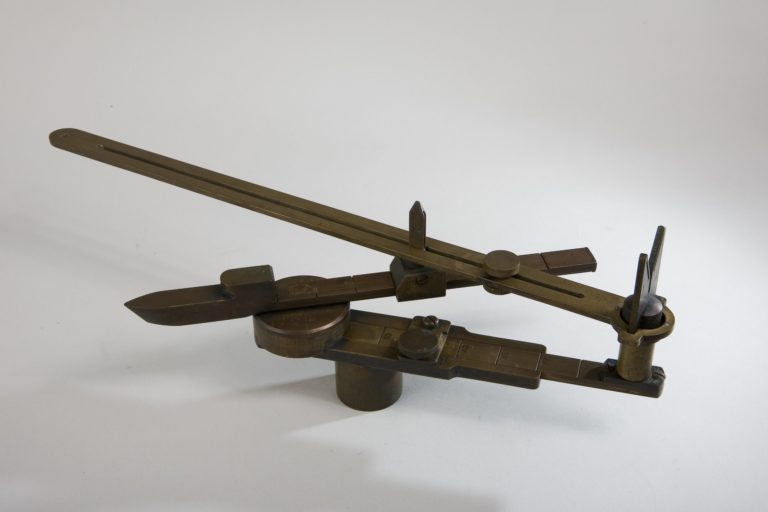
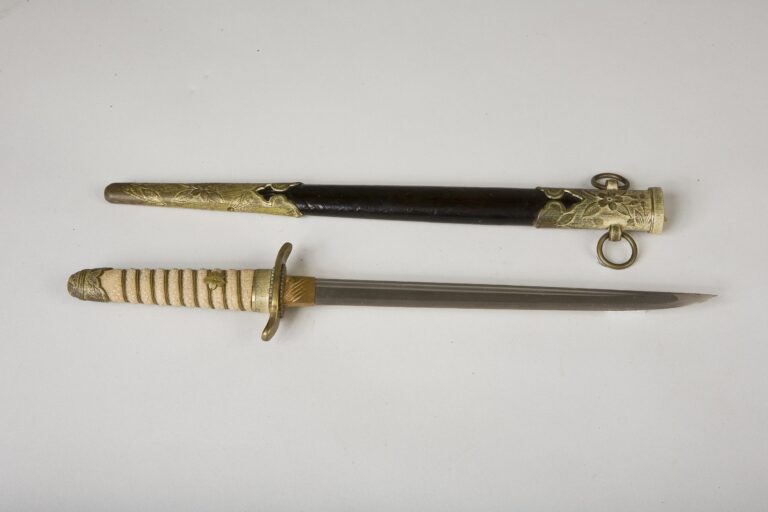

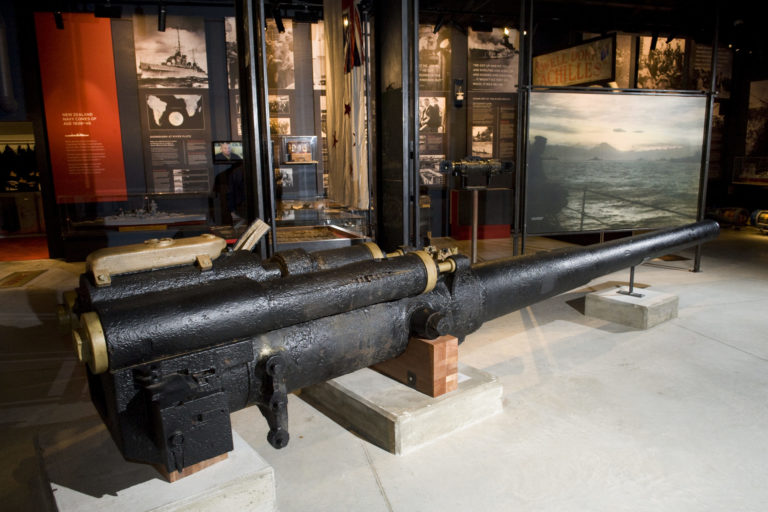



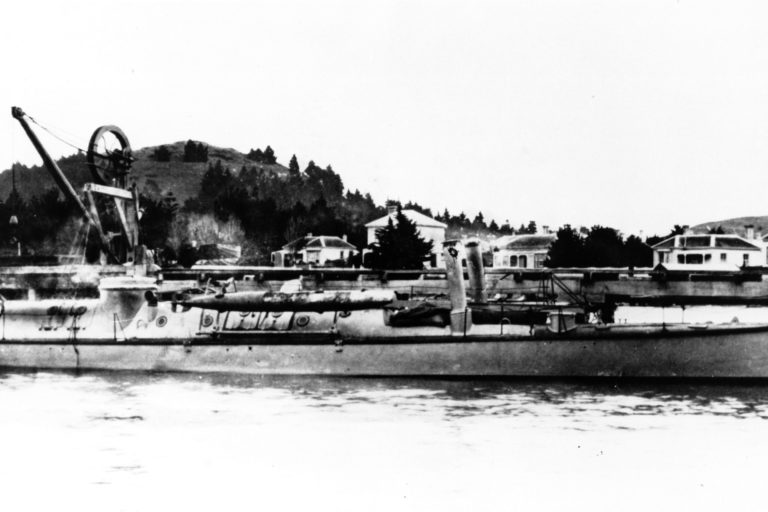
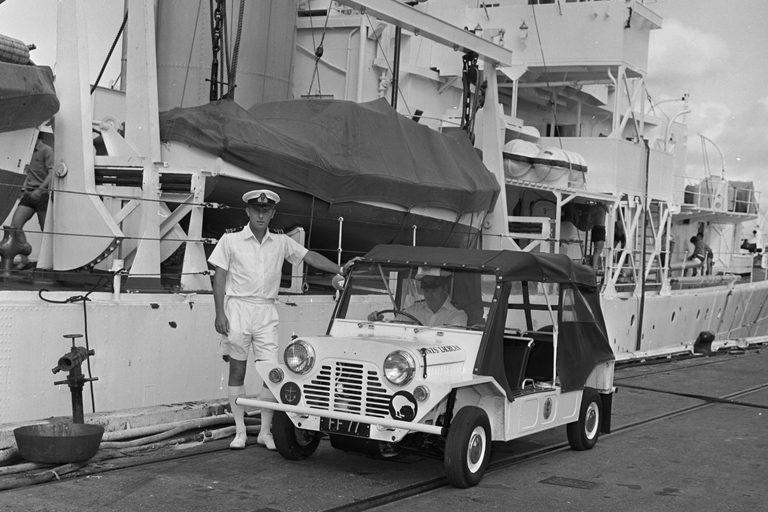
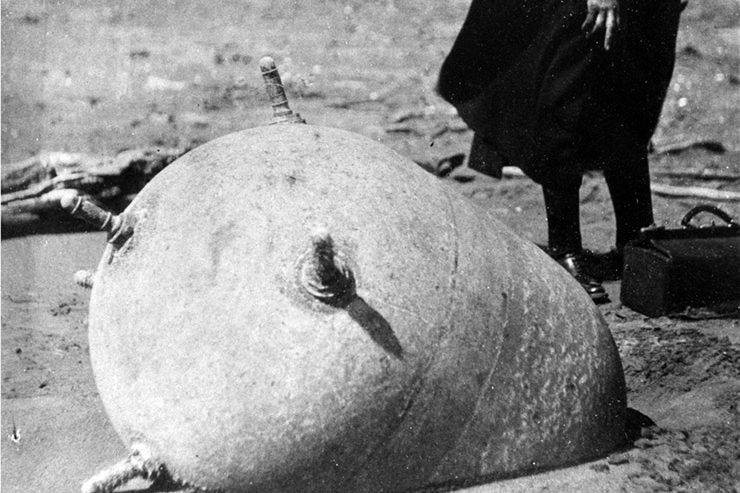

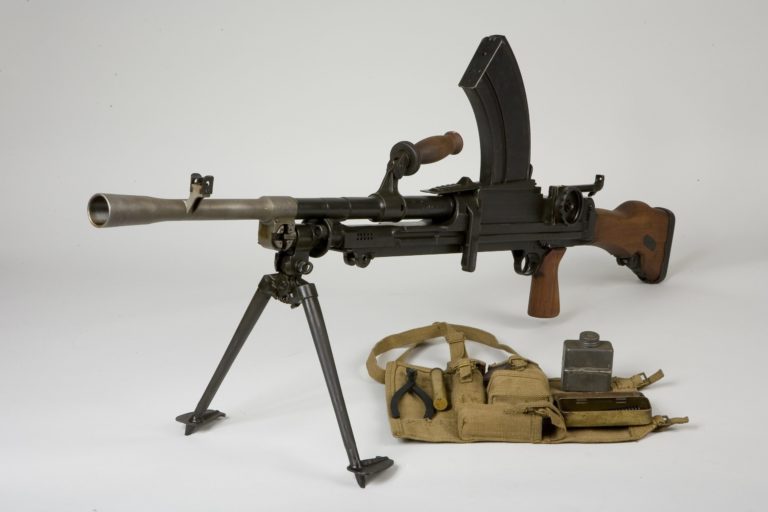

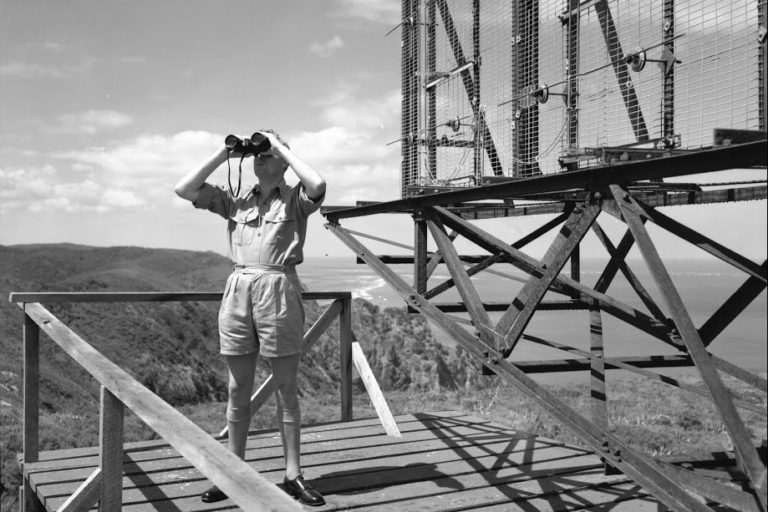

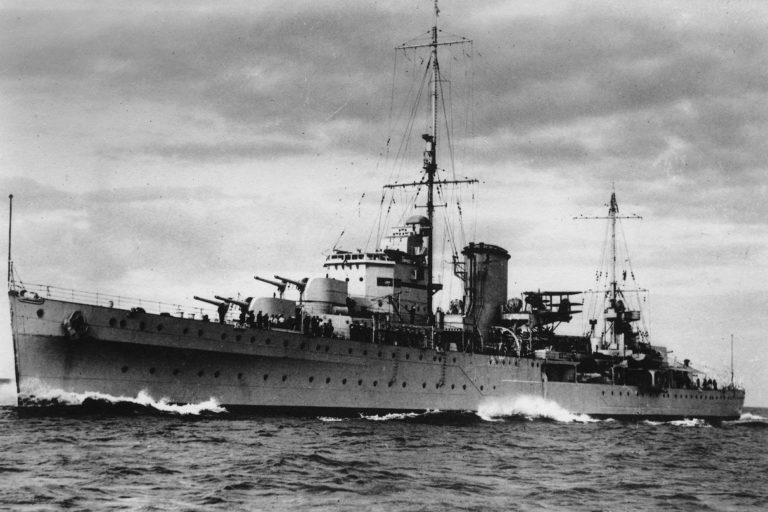
![Amokura Training Ship Amokura [formerly HMS Sparrow]](https://navymuseum.co.nz/wp-content/uploads/amokura.jpg)
